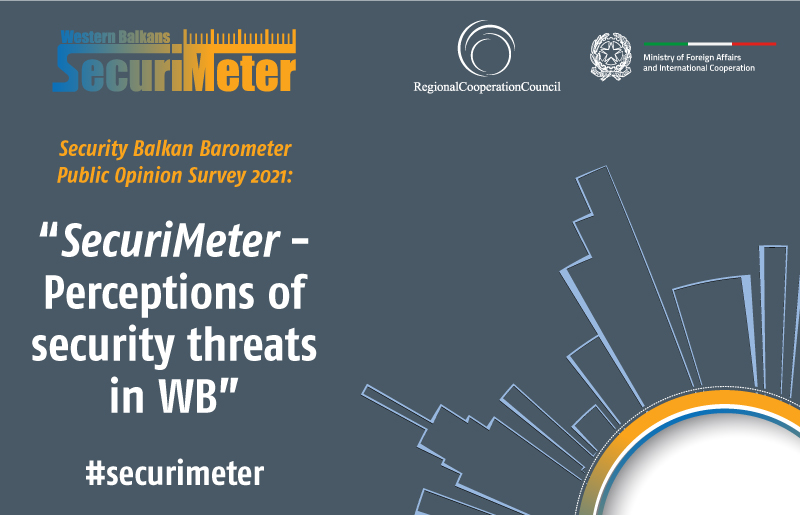- Home/
- News
Psychological Resilience: The Next frontier for Counterterrorism
Recent years have seen an increase in terrorist attacks utilizing everyday objects such as cars rather than perpetrating the violent act with weapons or explosives. Prominent examples are the Christmas market attack in Germany 2016, the vehicle attack in Nice or the attacks in Britain, on Westminster and London Bridge in 2017. Attacks such as these are easy to plan and execute but extremely difficult to counter, because detection prior to the attack is unlikely due to the lack of suspicious preparations required. Not every car crossing a bridge can be treated as a potential threat and not every truck delivering goods around a Christmas market can be placed under constant surveillance. Many of the preemptive counter-measures to such attacks employed by security forces and the government fall into the category of target-hardening. Physical resilience to terrorist attacks is increased by placing concrete blocks around Christmas markets, building protective barricades for pedestrians on bridges, or by an increased presence of police officers on potential attack sites.
When resilience is discussed in non-physical terms, it is often used to discuss individual resilience to radicalization or a decreased susceptibility to extremist ideas. Resilience is a term originally used to describe the psychological differences between children growing up in less than ideal surroundings,[1] related to today’s research on adverse childhood experiences. Some children were found to be naturally more resilient to these experiences than others, who often developed harmful psychological patterns. By analyzing individuals known to have radicalized, researchers have sought to determine factors potentially increasing susceptibility to radicalization and, on the flipside, elements increasing resilience to radicalization processes and acquiring a corresponding extremist worldview.
These factors usually fall in three categories, namely push, pull and personal factors.[2] Push factors are experiences, which may push an individual away from mainstream society and towards extremism, including poverty, lack of social identity or isolation.[3] Pull factors describe elements drawing individuals towards a terrorist group, that is to say the advantages associated with membership, including an increased social status, fame, brotherhood or experiencing adventures.[4] Personal factors are immediate experiences such as imprisonment[5] and direct personal victimization or personality traits,[6] including emotional vulnerability,[7] strong reciprocity,[8] social dominance orientation or Right-wing authoritarianism.[9]
All of these factors must be viewed as a measure of degree rather than absolute categories and their salience must be taken into account. While seeking adventure may be a common trait in many young adults, few would experience this wish as so salient that it would lead them to join an extremist organization. Psychological resilience to extremism can be understood as the outcome of all factors, those pushing and pulling the individual towards extremism as well as the contrary elements grounding an individual in mainstream society.
While increased research into the factors increasing psychological resilience to extremism are an important step in lowering the threat of homegrown radicalization and attacks, it is unfeasible to expect that academics and practitioners will be able to detect and prevent every radicalization in the future. Extremism, radicalization, and the threat of terrorism will not disappear. It is therefore necessary to place a focus not only on the psychological resilience of those potentially susceptible to radicalization, but also on the broader psychological resilience of the society as a whole dealing with the effects of terrorist violence.
Terrorism can be understood as a form of psychological warfare aimed at spreading fear and distrust among the targeted population.[10] In contrast to natural disasters, terrorism presents a threat that is always present in a subliminal manner and which is executed purposefully, rather than falling into the category of ‘uncontrollable’ tragedy. The prolonged exposure to a man-made long-term threat targeting the civilian population has psychological consequences for communities affected, including increased fear, potential scapegoating, decrease in trust, and a change in voting behavior. It is likely that so-called homegrown terrorism can especially exacerbate the negative consequences of exposure to the terrorist threat. While a threat from ‘outside’ may cause a rally around the flag effect and an increased societal cohesion and identification with the national collective, a threat from within is likely to have the opposite effect.
While psychological community resilience has been researched with regard to natural disasters[11] and war,[12] it has received less attention in the field of counter-terrorism. However, it is of utmost importance for academics, practitioners and policymakers to take psychological community resilience into account. The threat of terrorism can erode the very foundations multicultural democracies in the West are built upon and cause a polarization that is potentially dangerous to the liberal democratic order itself.
Tragic as lives lost and property damage from Islamist terrorism are, the threat terrorism poses to the West is not existential in a military sense; no Western nation is in danger of losing a war, even an asymmetric war, with violent non-state actors. But in the long-run, Western democracies could be severely damaged by the psychological consequences terrorism inflicts on its electorates, such as decreasing perceived belonging, increased distrust, and the erosion of social cohesion, which in turn influences elections to return ever-more extreme results that eventually undo democracy itself.
Without developing psychological resilience on a societal level, a continuation of the shift to the political Right currently observed in Europe and the US and the related polarization is likely to exacerbate. Security concerns might come to override essential freedoms and thereby threaten the liberal order that Western states are called upon to protect. In the long run, it may not be terrorism itself that threatens liberal democracies; it may be the psychological, social, and political reactions to it. Furthering our understanding of how societal resilience comes about, which factors influence it and how it can be increased, is therefore a high priority.
______________________________________________
References
[1] Veldhuis, T. und Bakker, E. (2013). “A Fear Management Approach to Counter-Terrorism” in Gunaratna, R., Jerard, J. und Nasir, S. (edt) Countering Extremism: Building Social Resilience through Community Engagement, pp. 91-106.
[2] Vergani, M., Iqbal, M., Ilbahar, E. und Barton, G. (2018). The Three Ps of Radicalization: Push, Pull and Personal. A Systematic Scoping Review of the Scientific Evidence about Radicalization Into Violent Extremism. Studies in Conflict & Terrorism. DOI: 10.1080/1057610X.2018.1505686
[3] Gill, P., Horgan, J., Deckert, P. (2014). Bombing Alone: Tracing the Motivations and Antecedent Behaviors of Lone-Actor Terrorists. Journal of Forensic Sciences. Vol. 59 (2), pp. 425-435
[4] Ranstorp, M. (2016). RAN Issue Paper: The Root Causes of Violent Extremism.
[5] Schuurmann, B. and Horgan, J. (2016). Rationales for terrorist violence in homegrown jihadist groups: A case study from the Netherlands, Aggression and Violent Behavior, Vol. 27, pp. 55-63
[6] McCauley, C. and Moskalenko, S. (2008). Mechanisms of Political Radicalization: Pathways Toward Terrorism. Terrorism and Political Violence. Vol. 20 (3), pp. 415-433
[7] Horgan, J. (2008). From Profiles to Pathways and Roots to Routes: Perspectives from Psychology on Radicalization into Terrorism. The Annals of the American Academy of Political and Social Science. Vol. 618. Terrorism: What the Next President Will Face, pp. 80-94.
[8] Moskalenko, S. and McCauley, C. (2011). The psychology of lone-wolf terrorism. Counselling Psychology Quarterly. Vol. 24 (2), pp. 115-126.
[9] Lemieux, A. and Asal, V. (2010). Grievance, social dominance orientation, and authoritarianism in the choice and justification of terror versus protest. Dynamics of Asymmetric Conflict. Vol. 3 (3), pp. 194-207
[10] Crelinsten, R. (2009). Counterterrorism. Polity Press: Cambridge
[11] Jacobs, G. (2016). Community-based psychological first aid: A Practical Guide to Helping Individuals and Communities During Difficult Times. Elsevier Inc: Oxford.
[12] Eshel, Y. und Kimhi, S. (2016). Community Resilience of Civilians at War: A New Perspective. Community Mental Health Vol. 52, pp. 109-117.
Author: Linda Schlegel
Source: Link



 Development of specialized PCVE web site is funded by EU FUNDS CN 2017-386/831 - "IPA II 2016 Regional Action on P/CVE in the Western Balkans"
Development of specialized PCVE web site is funded by EU FUNDS CN 2017-386/831 - "IPA II 2016 Regional Action on P/CVE in the Western Balkans"